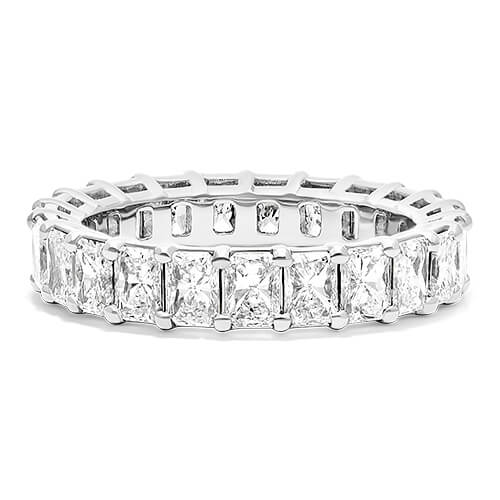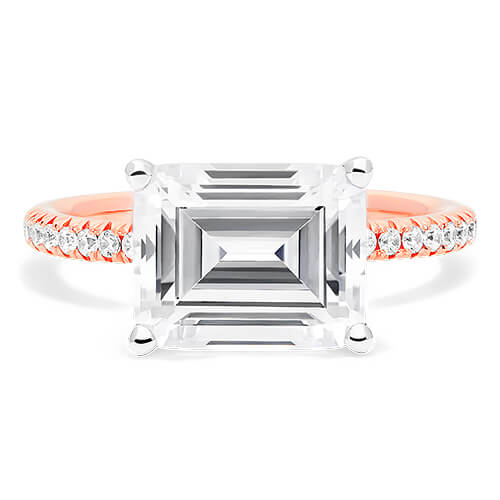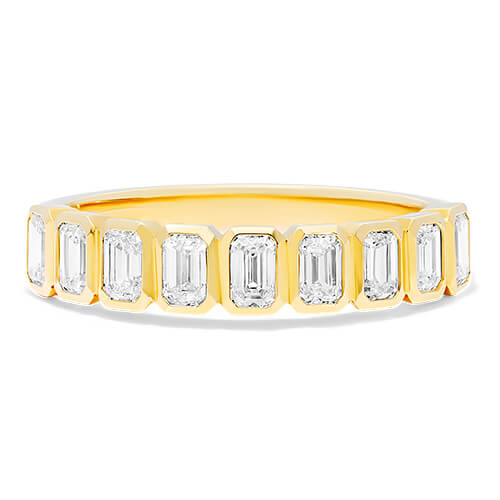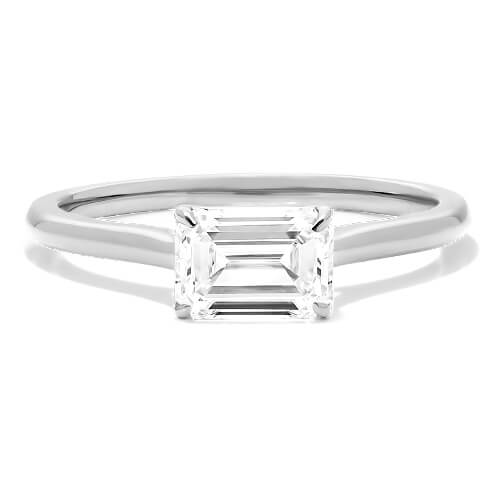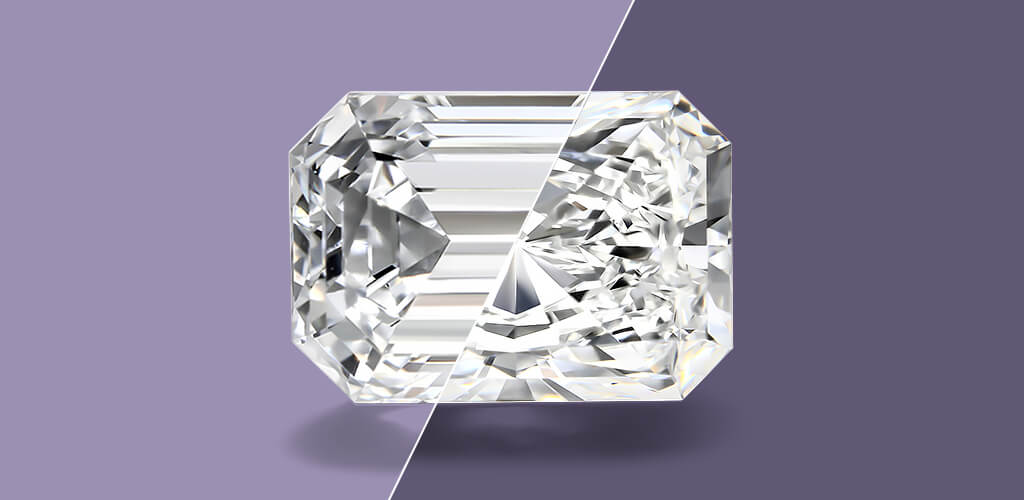
If you’re torn between an emerald cut and a radiant cut diamond, you’re not alone! At first glance, these stunning shapes may seem similar, but they each offer their own unique charm. Let’s explore the key differences between these stunning cuts to help you find your perfect diamond.
So what exactly is an emerald cut diamond? Is it an emerald? Is it a diamond? It might seem confusing at first, so let us explain. Despite its modern appeal, the emerald cut originated in the 1500s, making it one of the oldest diamond shapes. Stone cutters devised this style of cutting when seeking an effective way to cut emerald gemstones without cracking or chipping them.
This stunning shape gained popularity again in the 1920s during the Art Deco movement because of its clean lines and impressive symmetry. Diamonds with an emerald cut are cut using the same technique originally used to cut emeralds.
They feature long lines and a rectangular shape with cropped corners, which helps them be as durable as they are brilliant. Another reason they are so popular is that you can choose a larger size without a larger price tag. This is because their lines show ample reflections and allow them to shine bright, showcasing their size better than their counterparts.
The radiant cut diamond is a more modern, stylish square shape that was created to combine all of the finest features of the round brilliant cut and the emerald cut, invented by Henry Grossbard in 1977. This hybrid cut is one of the most faceted diamond styles, allowing it to maximize the natural beauty of a diamond.
Grossbard succeeded in creating one of the sparkliest cuts available by being the first to apply a brilliant faceting pattern to both the crown and pavilion of the stone. In comparison to other diamonds of the same carat weight, radiant cut diamonds appear larger because of their elongated shape.
Radiant cut diamonds are not only stunning but versatile, as they complement a wide range of settings, from simple solitaires to elaborate halo designs. Their captivating sparkle and modern silhouette make them a popular choice for engagement rings and statement jewelry pieces alike.
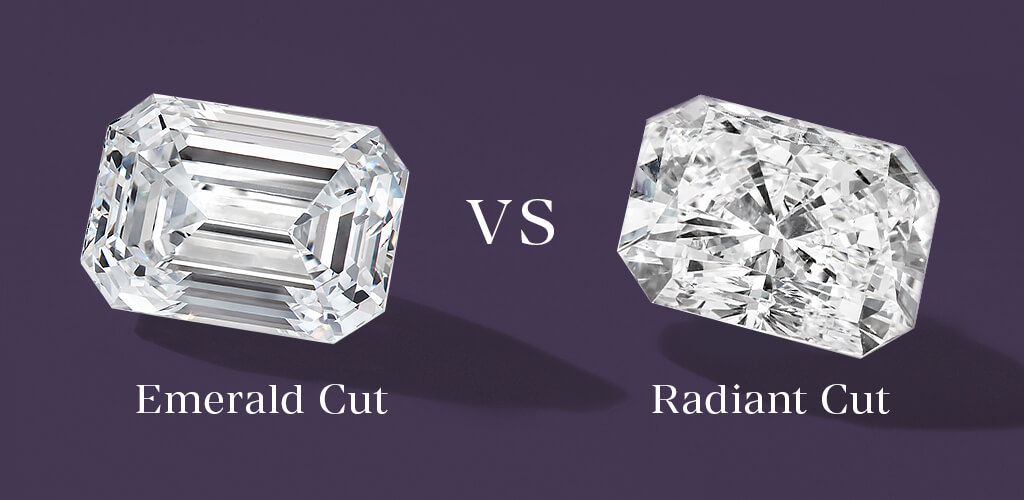
Before choosing between an emerald cut and a radiant cut diamond, it is important to know exactly what the differences between the two are. The emerald cut, known for its elegant, step-cut facets, delivers a timeless, sophisticated look that enhances the diamond’s clarity thanks to its hall-of-mirrors effect. It also does not reflect as much light, resulting in less sparkle than its counterpart.
On the other hand, the radiant cut offers a modern twist, combining brilliant-cut facets with a rectangular or square shape for extra sparkle and fire.
Both radiant and emerald cut diamonds are beautiful choices for engagement rings and fine jewelry. Ultimately, the choice comes down to personal preference and style. If you prefer a classic, elegant look with clean lines, the emerald cut might be the right fit for you.
However, if you’re drawn to a modern, sparkly look with a unique shape, a radiant cut diamond could be your perfect match.
When it comes to sparkle, the radiant cut shines brighter than the emerald cut. Why you may ask? Because radiant cut diamonds have multiple facets, they reflect light from multiple angles, creating a dazzling brilliance.
The emerald cut gives a more understated sparkle with its step-cut facets, known for a sophisticated, mirror-like effect. For maximum shine, choose the radiant cut, while for timeless elegance and a subtle glow, choose the emerald cut.
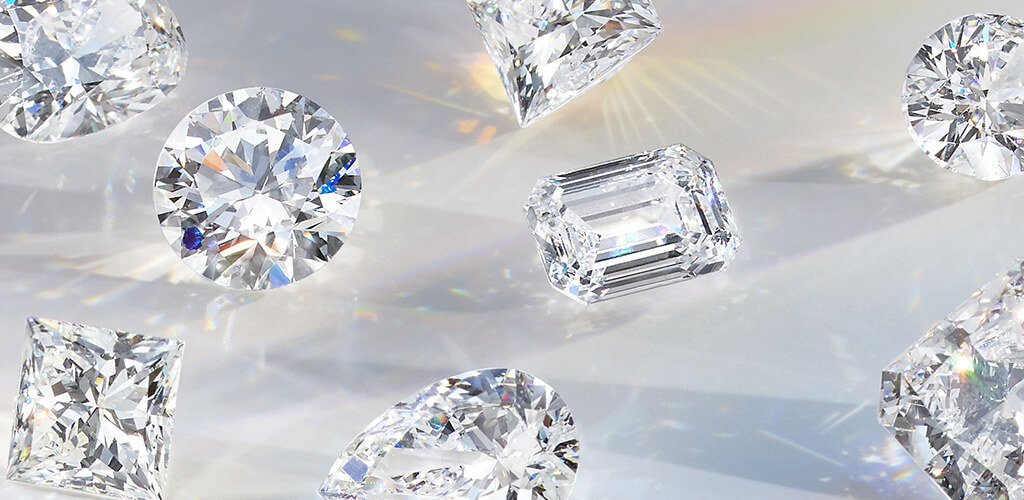
Here’s what our top experts suggest you prioritize when picking between an emerald or radiant cut diamond for your engagement ring:
Emerald Cut: Works beautifully in solitaire or minimalist settings, highlighting the diamond’s clarity and shape. It pairs well with vintage-inspired designs or three-stone rings.
Radiant Cut: Ideal for halo settings or pavé bands, where the diamond’s brilliance is further enhanced. It’s also a great fit for modern designs that emphasize sparkle.
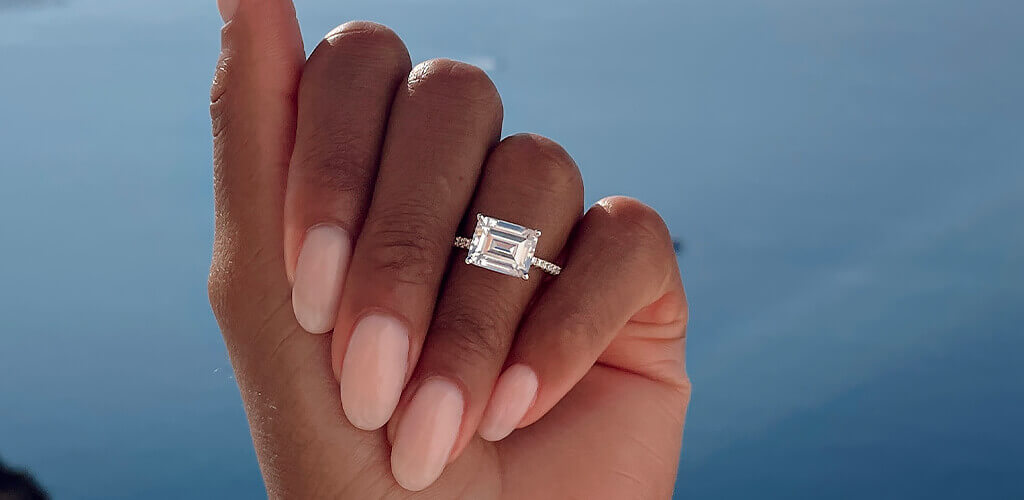
Pros Of Emerald Cut Diamonds:
Cons Of Emerald Cut Diamonds:
Pros Of Radiant Cut Diamonds:
Cons Of Radiant Cut Diamonds:
Various factors can influence the price of emerald cut and radiant cut diamonds, such as carat weight, color, clarity, and overall quality. Typically, emerald cut diamonds are likely to be slightly more affordable because their step-cut facets emphasize clarity over brilliance, meaning they don’t require as much precision cutting to maximize sparkle.
While radiant cut diamonds are often priced higher due to the craftsmanship involved in their intricate cutting, which maximizes their brilliance and sparkle.
Some of the most popular fancy-shaped diamonds include the timeless princess cut, which offers a modern twist with its sharp edges, and the romantic oval cut, loved for its elegant, elongated appearance. Cushion cut diamonds are also favored for their soft, rounded edges and vintage charm.
Although both the emerald and radiant cuts are durable, the radiant cut’s faceted edges make it slightly more resistant to chips compared to the emerald cut’s larger, open facets. Nonetheless, both cuts can last a lifetime if cared for properly.
Choosing between an emerald or radiant cut for an engagement ring really depends on your personal style. The emerald cut diamond offers a sleek, sophisticated look with its step-cut facets and clean lines, whereas the radiant cut provides extra sparkle and brilliance.
Making it perfect for those seeking a more dazzling appearance. Ultimately, both diamond cuts bring their own unique beauty, so the best choice is the one that reflects your individual taste and love story.
